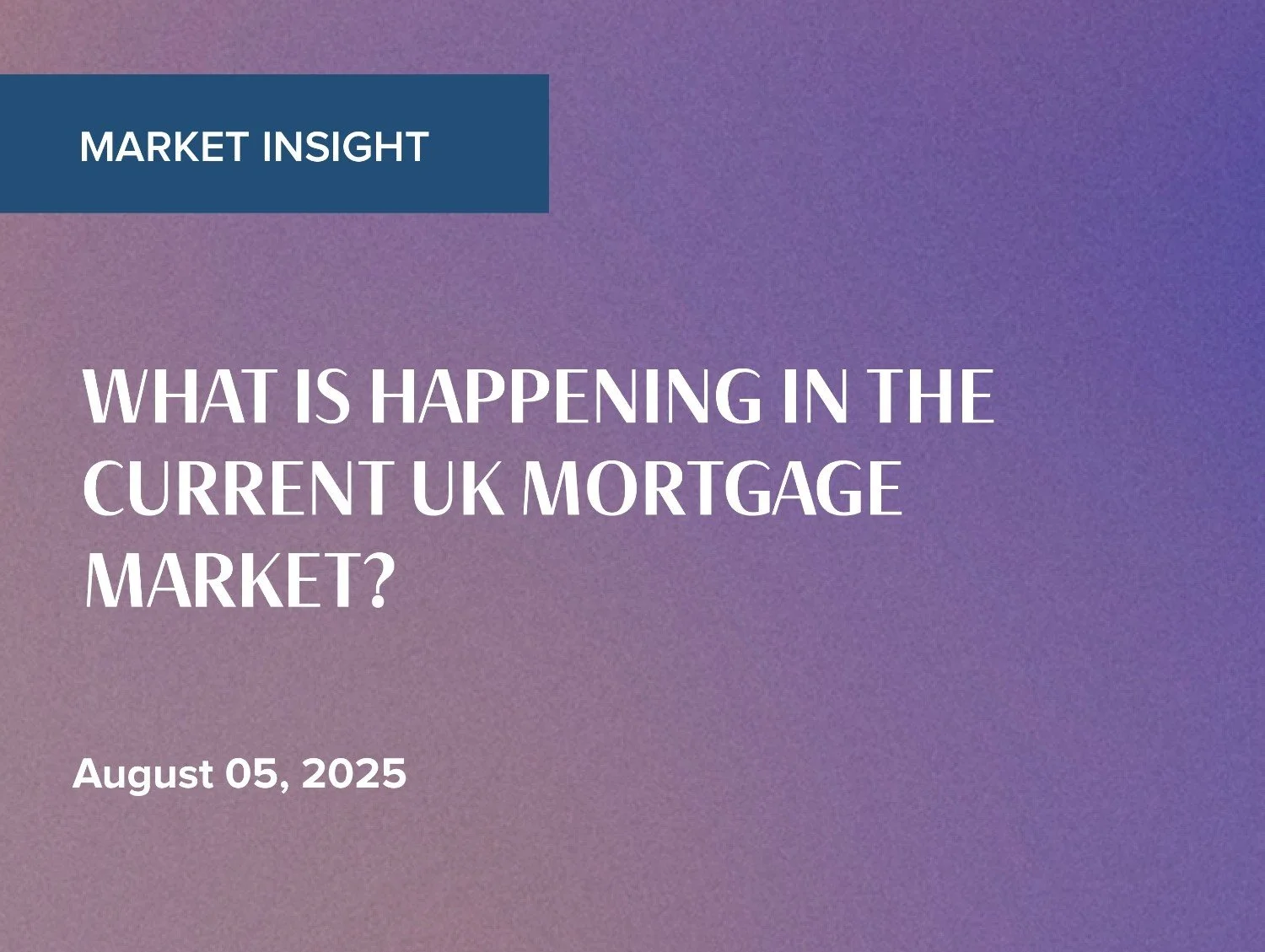
MARKET INSIGHT
An overview of Buy-to-let mortgage rates in the UK
August 13, 2025 • Author: Elliot Rowe
Kingfisher, Manchester
Share On:
The UK buy-to-let market has long been an attractive investment opportunity for both domestic and overseas investors. With a growing demand for rental properties in cities like London, Manchester, and Birmingham, it’s no surprise that many are keen to enter the market. One of the key elements to consider when buying property to rent out is securing a competitive buy-to-let (BTL) mortgage. For overseas investors, however, navigating the UK's complex mortgage landscape can be challenging. In this blog, we'll provide an overview of UK buy-to-let mortgage rates, how they are determined, and practical advice for overseas investors looking to secure the best deals.
What Are Buy-to-Let Mortgages?
A buy-to-let (BTL) mortgage is a type of loan specifically designed for people who want to purchase a property to rent it out rather than live in it themselves. These mortgages differ from standard residential mortgages in several ways, particularly in terms of the lending criteria, rates, and repayment terms. BTL mortgages are offered by banks, building societies, and specialist lenders, and they are typically available to both UK residents and overseas investors.
Understanding Buy-to-Let Mortgage Rates in the UK
BTL mortgage rates in the UK can vary widely based on a number of factors, including the type of mortgage, the borrower’s financial profile, the loan-to-value (LTV) ratio, and the lender’s assessment of the property itself.
Fixed vs. Variable Rates
Fixed-Rate Mortgages
These offer a set interest rate for a fixed period, usually 2, 3, 5, or even 10 years. This type of mortgage offers certainty, as the borrower’s monthly payments won’t change during the fixed term. Once the term ends, the mortgage typically reverts to the lender’s standard variable rate (SVR), which can be higher.
Variable-Rate Mortgages
These rates fluctuate in line with changes in the Bank of England base rate and the lender’s decisions. The most common types of variable rates are tracker mortgages and standard variable rates (SVR). With variable rates, payments can go up or down over time, which can make budgeting harder.
Loan-to-Value (LTV) Ratio
The loan-to-value ratio is the amount you borrow compared to the value of the property. For example, if you're purchasing a property worth £200,000 and you borrow £150,000, your LTV is 75%. In general, the higher the LTV, the higher the interest rate. For BTL mortgages, lenders typically offer mortgages with an LTV of up to 75%, although some may go higher for borrowers with a strong financial profile.
Interest-Only vs. Repayment Mortgages
With an interest-only mortgage, you only pay the interest on the loan, not the capital. This means your monthly payments will be lower, but you won’t reduce the loan balance unless you make extra payments or sell the property. Repayment mortgages, on the other hand, involve paying both the interest and a portion of the principal loan amount, meaning the balance will reduce over time. Most investors choose to take out an interest-only mortgage for their property as when the capital appreciation from selling the investment property further down the line pay off the debt.
Additional Fees
In addition to the interest rate, BTL mortgages often come with a range of additional fees, including:
Arrangement fees: One-off fees charged for setting up the mortgage.
Valuation fees: Fees for valuing the property before the loan is approved.
Legal fees: If the mortgage requires legal advice or work, this can incur extra costs.
Early repayment charges: If you pay off your mortgage early (during the fixed rate period), some lenders may charge a fee.
Credit Score and Affordability
Lenders assess the borrower's credit history and the property’s rental potential to determine whether they can afford the mortgage. Typically, BTL mortgage lenders require borrowers to show that the rental income from the property will cover the mortgage payments by at least 125% to 145%. This is often referred to as the “rental coverage ratio.” For overseas investors, lenders may require additional documentation, such as evidence of foreign income and assets.
Kingfisher, Manchester
Buy-to-Let Mortgage Rates for Overseas Investors
For non-resident property investors (i.e., those living outside the UK), securing a buy-to-let mortgage in the UK can be more challenging, but it is certainly possible. There are several things that overseas investors need to be aware of when applying for a BTL mortgage in the UK:
Lender Requirements
LTV Ratios
Overseas investors are often limited to a lower LTV ratio than UK residents. Typically, this is around 65% or 70%, though some lenders may offer up to 75%.
Credit Checks and Affordability
UK lenders will want to ensure that the rental income will cover the mortgage payments. For non-UK residents, some lenders may look more closely at the investor’s financial profile and employment history. This can include reviewing income from abroad, bank statements, and evidence of other assets.
Higher Interest Rates
Non-resident investors often face higher interest rates than UK residents. This is due to the perceived higher risk, as the lender is less able to assess the investor’s financial situation and has less recourse if repayments fall behind.
Foreign Currency Considerations
If you are an overseas investor, you will likely have to deal with currency exchange fluctuations when making payments on your mortgage. Lenders will offer mortgages in British pounds (GBP) and the repayments are made in GBP. If you need to top the payments up thanks to there not being a tenant in place or a slight deficit in the rent vs cost monthly cash position you will need to be aware of the FX exposure to your base currency. Some investors may choose to open a UK bank account to facilitate payments, but you should always factor in currency conversion fees when calculating the total cost of the mortgage and indeed property cost as a whole.
Donna Spencer CEO of the International Property Finance Group (IPFG) highlights the importance of working with the right FX provider from the outset, to maximise your financial efficiency by saving money on deposit transfers and other exchanges. Choosing a reputable FX provider is something investors should do from the very outset of their property purchase.
Choosing a reputable FX provider is a crucial step from the very outset of a property purchase. In our previous webinar, A Smarter Approach to UK Property and International Payments, we discussed how to streamline transactions and maximise value through smarter currency strategies. Click here to watch.
Additional Documentation
Non-resident investors may be required to submit additional documentation, including proof of identity, proof of address (from your home country), and a reference from an international bank. It’s also common for lenders to ask for a deposit of 25% or more from overseas investors.
Tax Implications
Overseas investors must be mindful of UK tax laws when investing in property. They may be subject to Stamp Duty Land Tax (SDLT) on property purchases, and income from rental properties is taxable in the UK. From 31st October 2024 Stamp Duty on the purchase of second homes and BTL properties rose from 3% to 5%, giving even more reason to hunt for the best deal you can on for BTL mortgage rates. Additionally, if you sell the property, capital gains tax (CGT) may apply. Consulting with a tax professional who understands both UK and international tax law is essential to avoid unexpected liabilities.
Kingfisher, Manchester
Conclusion: Navigating the UK Buy-to-Let Mortgage Market
The UK buy-to-let mortgage market offers a wealth of opportunities for property investors, but understanding its nuances is key to making the most of your investment. From choosing between fixed and variable rates to navigating affordability criteria and legislative changes, each decision plays a critical role in your success.
By staying informed about market trends, building a strong financial plan, and seeking professional advice when needed, you can position yourself to capitalize on the potential returns of property investment. Whether you’re a seasoned investor or just starting out, a clear understanding of the mortgage landscape will empower you to make smarter, more strategic choices.
As the market continues to evolve, keeping an eye on changes and regularly reviewing your portfolio will ensure your investment remains profitable and sustainable. With the right approach, the UK buy-to-let market can be a rewarding avenue for building wealth and achieving your financial goals.
RPA Group has been advising UK property investors for over 20 years. Our full suite of financial and mortgage services caters perfectly to investors looking for a hassle-free property investment. Our direct relationships with leading UK developers enable our client base exclusive buying opportunities of the best UK & London property investments. Whether you are looking to purchase just one unit, or build a portfolio we’re here to help our clients build high-performing real estate assets and property portfolios.
Speak to one of our dedicated agents today.
Get expert guidance on buying UK property
FEATURED PROPERTY
kingfisher
From £250,000
Complete Q1 2029
10% Deposit Now
Up to 6.5% Yield
The tallest tower around the Red Bank Riverside podium gardens, the 30-storey Kingfisher boasts the development's most stunning views, overlooking River Irk.
About the author
Director
elliot rowe
Elliot has 16 years of experience in the UK Real Estate Industry working in the UK and the Middle East. He’s been advising clients in how to develop leading portfolios to achieve their goals and personal targets.
Further Reading: UK Mortgage Market

Trusted by Our Clients
Discover why our clients love working with us and how our expert guidance helps them navigate the UK property investment market with confidence.




















